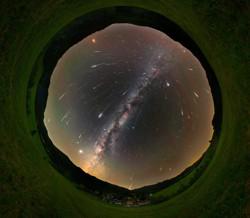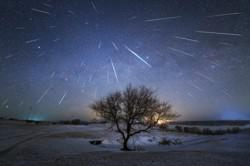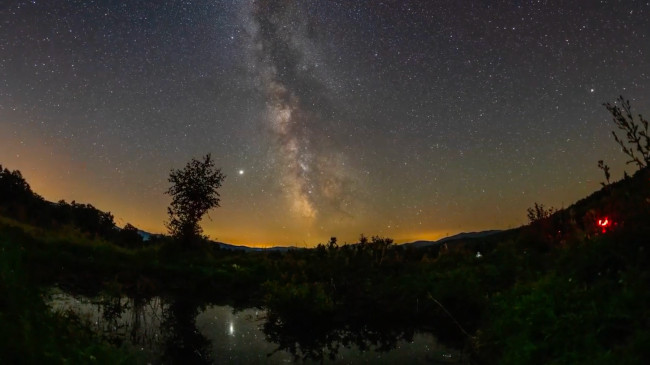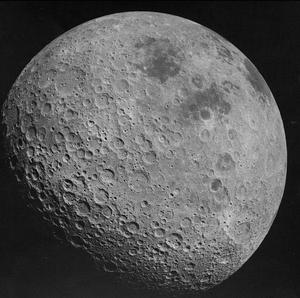Glossary term: Shooting Star
Description: A shooting star (or meteor) is a fragment of an asteroid or comet, or a piece of space debris, entering the atmosphere of the Earth or another celestial body and catching fire due to heat generated by friction with the atmosphere. This heat generated by friction is similar to the way we warm our hands by rubbing them together when we are cold. Shooting stars are usually very small in size ranging from a few millimeters to a few centimeters. Astronomers call them meteors. Their direction, time of year we observe them, and color allow us to learn more about where they originated from and what they are made of.
The brightest meteors are called fireballs and they can often be seen in the sky, sometimes even during the day. Occasionally, observers have even reported hearing sounds as they burn and travel through the atmosphere. Shooting stars also causes the ionization of the atmosphere which, for Earth, can be observed with radar.
On Earth, shooting stars are visible throughout the year, but occasionally many shooting stars occur in short timescales such as on the same night. Many of these meteor showers recur on predictable yearly patterns and have been given names based on the constellation the meteors appear to originate (or radiate) from. Famous meteor showers include the Perseids and the Leonids.
Related Terms:
See this term in other languages
Term and definition status: This term and its definition have been approved by a research astronomer and a teacher
The OAE Multilingual Glossary is a project of the IAU Office of Astronomy for Education (OAE) in collaboration with the IAU Office of Astronomy Outreach (OAO). The terms and definitions were chosen, written and reviewed by a collective effort from the OAE, the OAE Centers and Nodes, the OAE National Astronomy Education Coordinators (NAECs) and other volunteers. You can find a full list of credits here. All glossary terms and their definitions are released under a Creative Commons CC BY-4.0 license and should be credited to "IAU OAE".
Related Media
Gemini meteor shower, by Hao Yin, China
Credit: Hao Yin/IAU OAE
License: CC-BY-4.0 Creative Commons Attribution 4.0 International (CC BY 4.0) icons
Perseids 2020 over Dark Sky Park Poloniny, by Tomáš Slovinský, Slovakia
Credit: Tomáš Slovinský/IAU OAE
License: CC-BY-4.0 Creative Commons Attribution 4.0 International (CC BY 4.0) icons
Geminid Meteor Shower from China, by Dai Jianfeng, China
Credit: Dai Jianfeng/IAU OAE
License: CC-BY-4.0 Creative Commons Attribution 4.0 International (CC BY 4.0) icons
Between Two Skies
Credit: Fabrizio Melandri/IAU OAE
License: CC-BY-4.0 Creative Commons Attribution 4.0 International (CC BY 4.0) icons
Flowing Night Sky
Credit: Robert Barsa/IAU OAE
License: CC-BY-4.0 Creative Commons Attribution 4.0 International (CC BY 4.0) icons
Lyrid of the Lake
Credit: Jianfeng Dai/IAU OAE
License: CC-BY-4.0 Creative Commons Attribution 4.0 International (CC BY 4.0) icons
The Geminid Fireball
Credit: Jianfeng Dai/IAU OAE (CC BY 4.0)
License: CC-BY-4.0 Creative Commons Attribution 4.0 International (CC BY 4.0) icons
Related Activities
Meteoroids, Meteors and Meteorites
astroEDU educational activity (links to astroEDU website) Description: Unveiling the mystery of "shooting stars": meteors, meteorites and meteroidsLicense: CC-BY-4.0 Creative Commons Attribution 4.0 International (CC BY 4.0) icons
Tags: Geology Age Ranges: 6-8 , 8-10 , 10-12 , 12-14 Education Level: Middle School , Primary Areas of Learning: Interactive Lecture Costs: Low Cost Duration: 1 hour 30 mins Group Size: Group Skills: Analysing and interpreting data , Asking questions , Communicating information , Engaging in argument from evidenceImpact Craters
astroEDU educational activity (links to astroEDU website) Description: A literal Earth-Shattering experimentLicense: CC-BY-4.0 Creative Commons Attribution 4.0 International (CC BY 4.0) icons
Tags: History , Impact , Experiment Age Ranges: 10-12 , 12-14 , 14-16 Education Level: Middle School , Primary , Secondary Areas of Learning: Guided-discovery learning , Modelling , Traditional Science Experiment Costs: Low Cost Duration: 1 hour Group Size: Group Skills: Analysing and interpreting data , Asking questions , Constructing explanations , Engaging in argument from evidence , Using mathematics and computational thinking
















